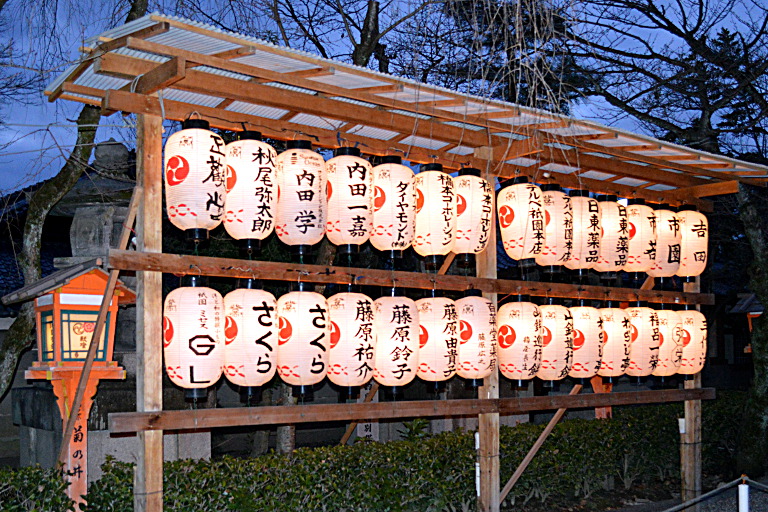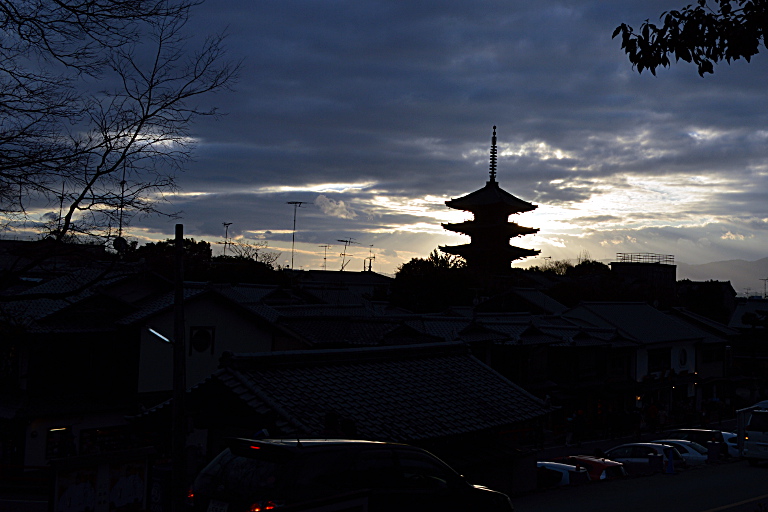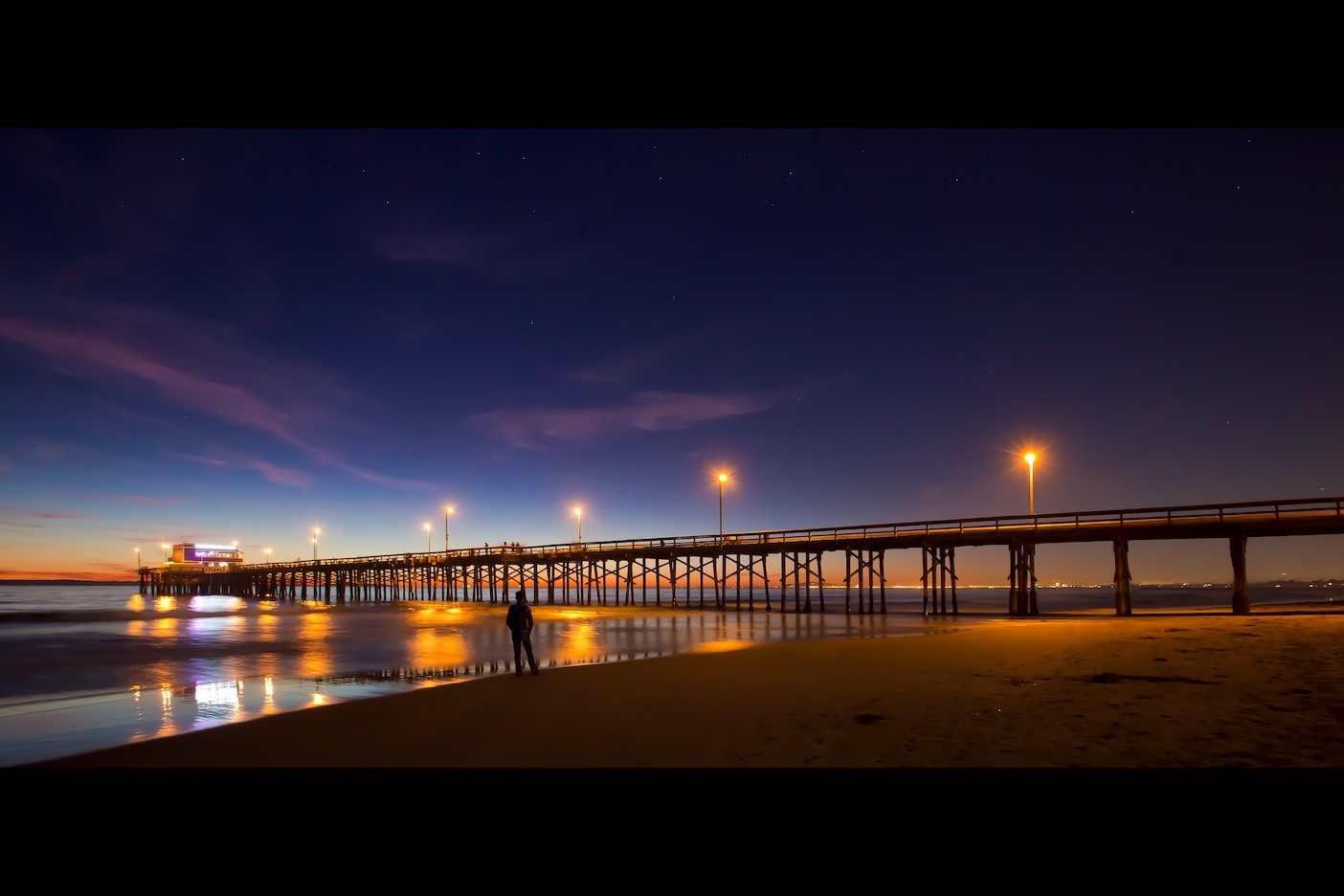Osaka Castle
The main tower of Osaka Castle is situated on a plot of land roughly one square kilometer. It is built on two raised platforms of landfill supported by sheer walls of cut rock, using a technique called Burdock piling, each overlooking a moat. The central castle building is five stories on the outside and eight stories on the inside, and built atop a tall stone foundation to protect its occupants from attackers.
The Castle grounds, which cover approximately 60,000 square meters (15 acres) contain thirteen structures which have been designated as Important Cultural Assets by the Japanese government.
In 1583 Toyotomi Hideyoshi commenced construction on the site of the Ikko-ikki temple of Ishiyama Hongan-ji. The basic plan was modeled after Azuchi Castle, the headquarters of Oda Nobunaga. Toyotomi wanted to build a castle that mirrored Oda’s, but surpassed it in every way: the plan featured a five-story main tower, with three extra stories underground, and gold leaf on the sides of the tower to impress visitors.
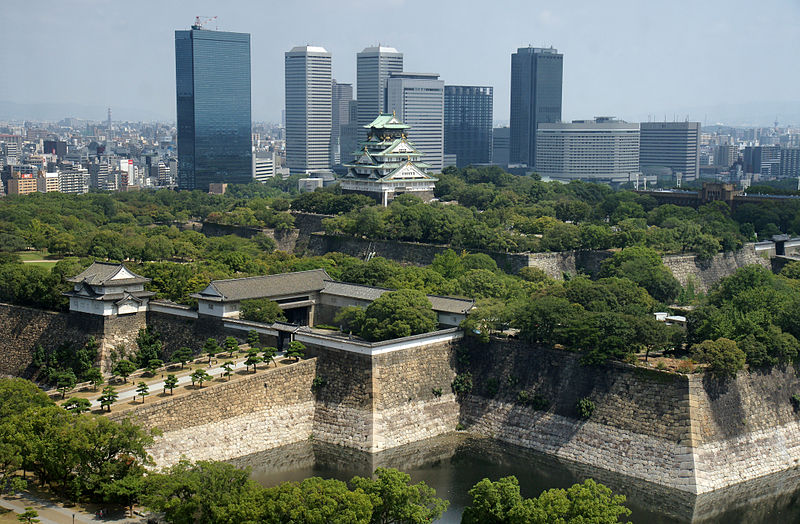
My son asks me, “Couldn’t invaders cross the moat on this bridge, just like we’re doing?”
“I’m going to go out on a limb here and speculate that the bridge was added in modern times, not as part of the original construction.”
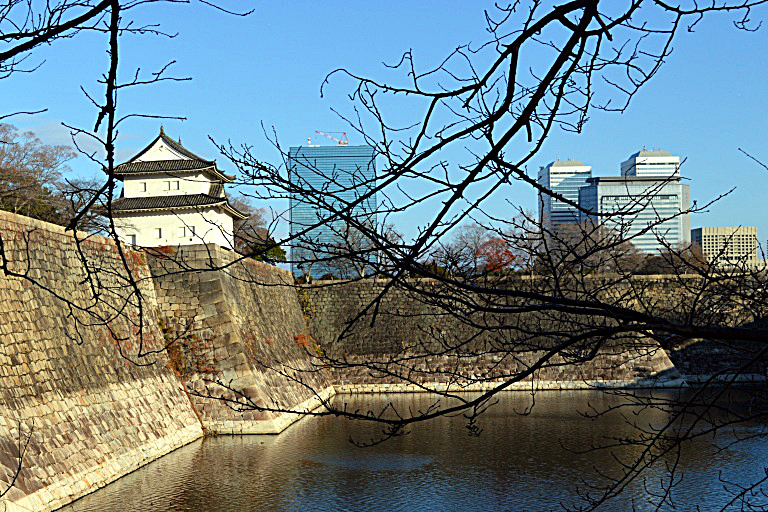
We entered the castle through the Otemon Gate:
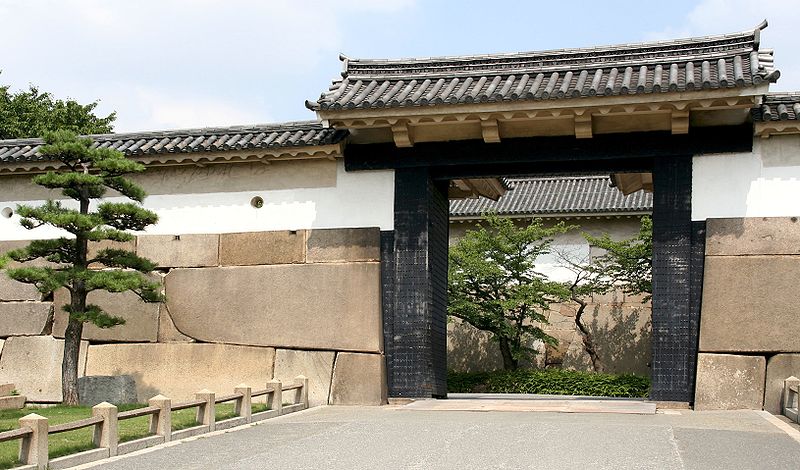
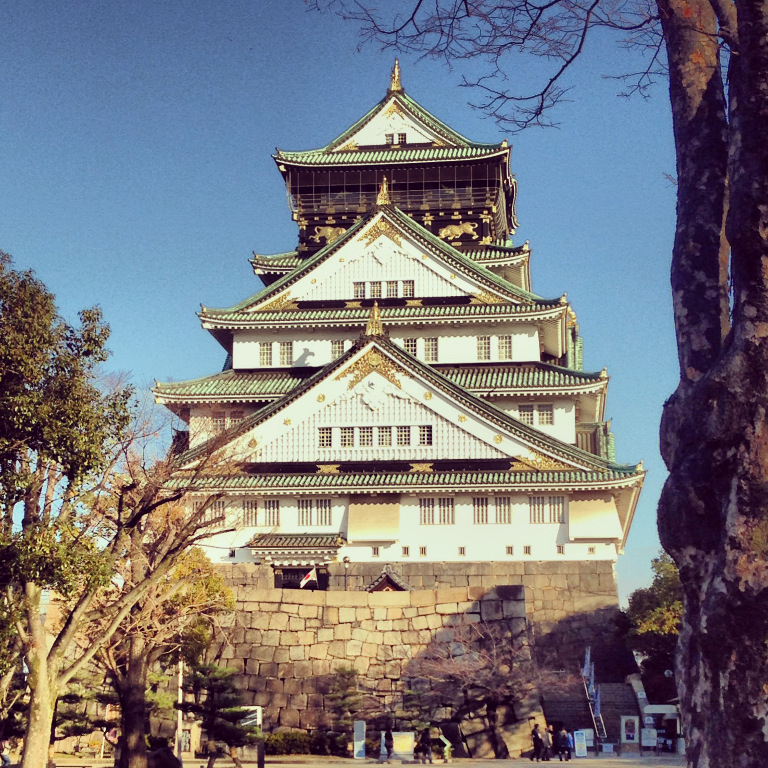

There was a gentleman at the castle with a large supply of something or other that birds like to eat, so the birds followed him around:

He didn’t speak English but he kindly shared some of his bird food with us:

Todai-ji Temple
Todai-ji (Todai-ji, Eastern Great Temple), is a Buddhist temple complex located in the city of Nara, Japan. Its Great Buddha Hall (Daibutsuden), houses the world’s largest bronze statue of the Buddha Vairocana, known in Japanese simply as Daibutsu. The temple also serves as the Japanese headquarters of the Kegon school of Buddhism. The temple is a listed UNESCO World Heritage Site as “Historic Monuments of Ancient Nara“, together with seven other sites including temples, shrines and places in the city of Nara. Sika deer, regarded as messengers of the gods in the Shinto religion, roam the grounds freely.
We entered Todai-ji Temple through Nandaimon, the Great Southern Gate. In the photo below, the stand on the left sells biscuits you can buy and feed to the deer. More on that later . . .




Great Buddha Hall
According to records kept by Todai-ji, more than 2,600,000 people in total helped construct the Great Buddha and its Hall. The 16 m (52 ft) high statue was built through eight castings over three years, the head and neck being cast together as a separate element. The making of the statue was started first in Shigaraki. After enduring multiple fires and earthquakes, the construction was eventually resumed in Nara in 745,[8] and the Buddha was finally completed in 751. A year later, in 752, the eye-opening ceremony was held with an attendance of 10,000 people to celebrate the completion of the Buddha. The Indian priest Bodhisena performed the eye-opening for Emperor Shomu. The project nearly bankrupted Japan’s economy, consuming most of the available bronze of the time.


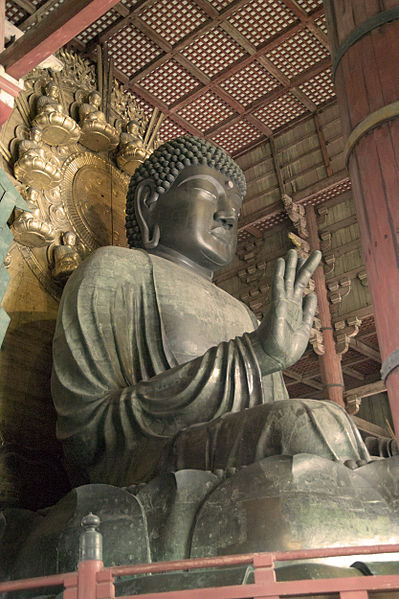
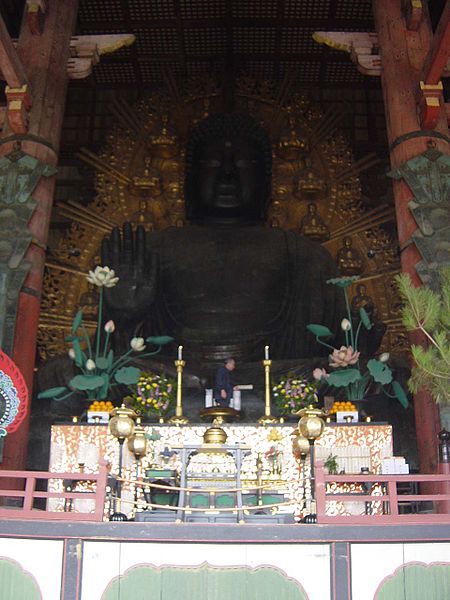

Nara Deer Park
According to the legendary history of Kasuga Shrine, a mythological god Takemikazuchi arrived in Nara on a white deer to guard the newly built capital of Heijo-kyo. Since then the deer have been regarded as heavenly animals, protecting the city and the country.
Tame Sika Deer roam through the town, especially in Nara Park. Snack vendors sell “shika sembei” (deer biscuits) to visitors so they can feed the deer.

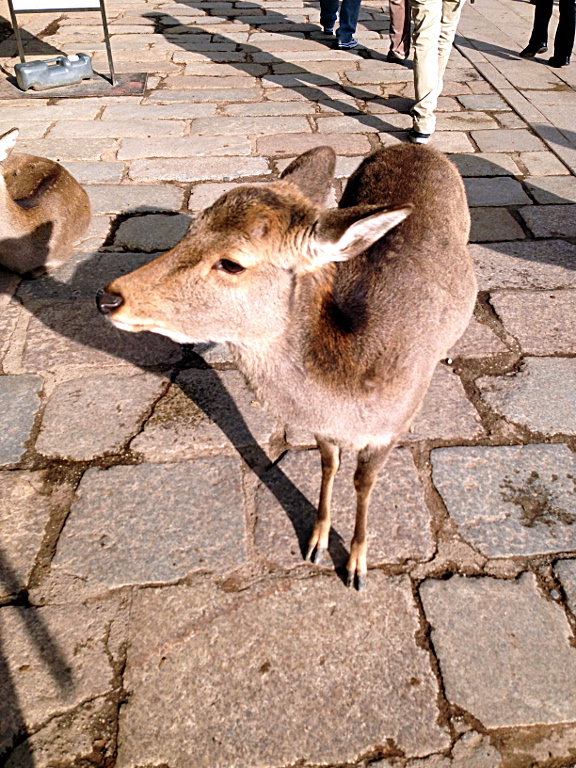

“Deer are not naturally aggressive if you’re not aggressive with them,” our tour guide says.
In other news, grass is green and water flows downhill. What would an aggressive deer do anyway? What sort of aggressive deer behavior should we be on the lookout for?
OK, I’ll tell you: You can buy shika sembei (deer biscuits) to feed the deer. Deer really like the deer biscuits. If you have biscuits, the deer will surround you and nibble on you. While you’re feeding the ones in front of you, the deer who couldn’t find room in front will nibble you from behind so they don’t get left out.
In fact, if the deer are not sure if you have biscuits or not, they may nibble on you anyway, usually in the area of your pockets, which would be an ideal place to conceal deer biscuits.
A good thing to know is that the deer do recognize and respect an open-handed, “See I don’t have any deer biscuits” gesture and will acknowledge it by not nibbling you.
These deer, sika deer, are regarded as messengers of the gods in the Shinto religion. If that is true, the message the gods are sending us is “More biscuits, please.”



Kiyomizu Temple
Kiyomizu-dera, officially Otowa-san Kiyomizu-dera is an independent Buddhist temple in eastern Kyoto.
Kiyomizu-dera was founded in the early Heian period. The temple was founded in 798, and its present buildings were constructed in 1633, ordered by the Tokugawa Iemitsu. There is not a single nail used in the entire structure. It takes its name from the waterfall within the complex, which runs off the nearby hills. Kiyomizu means clear water, or pure water.
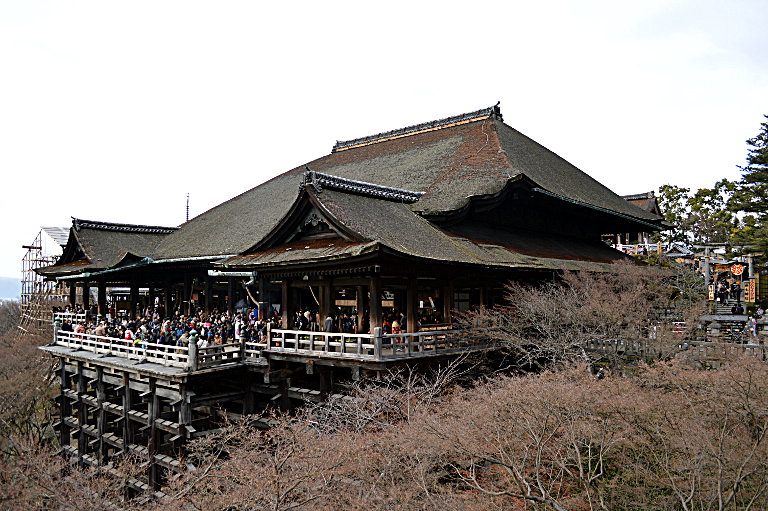
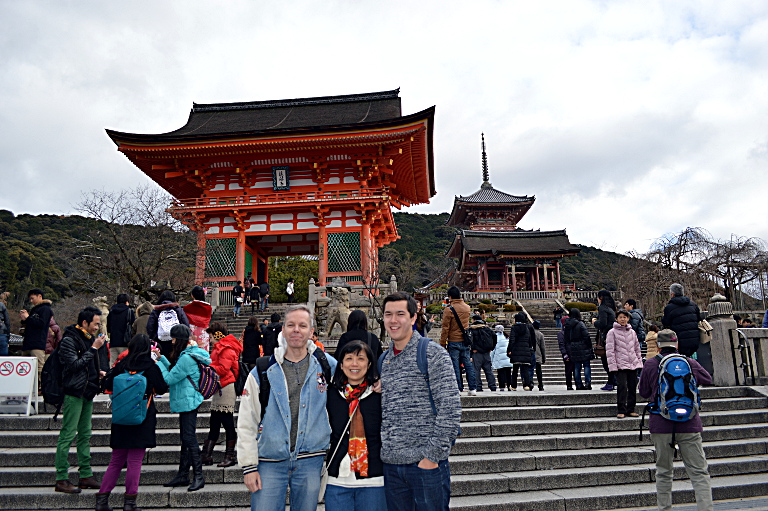
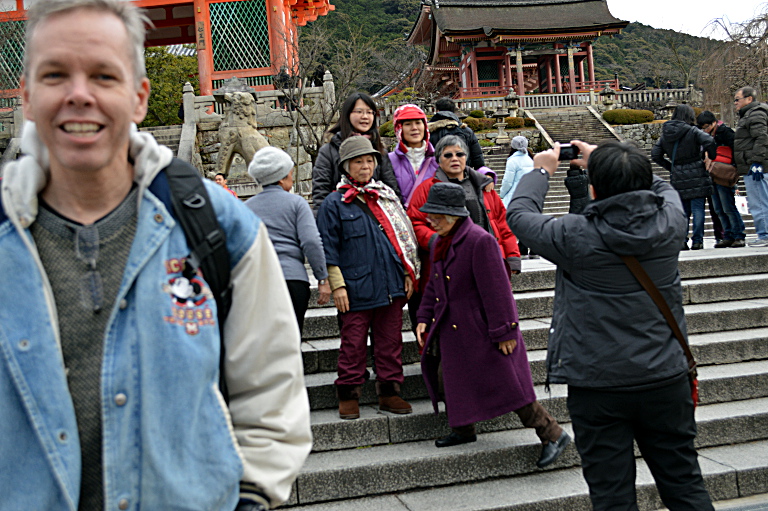
The temple complex contains several shrines, including the Jishu-jinja Shrine, known as the dwelling place of the god of love and matchmaking. Praying there is said to help one succeed in finding an appropriate love match.

The temple is popular with young people looking for good fortune in love.

